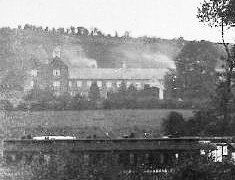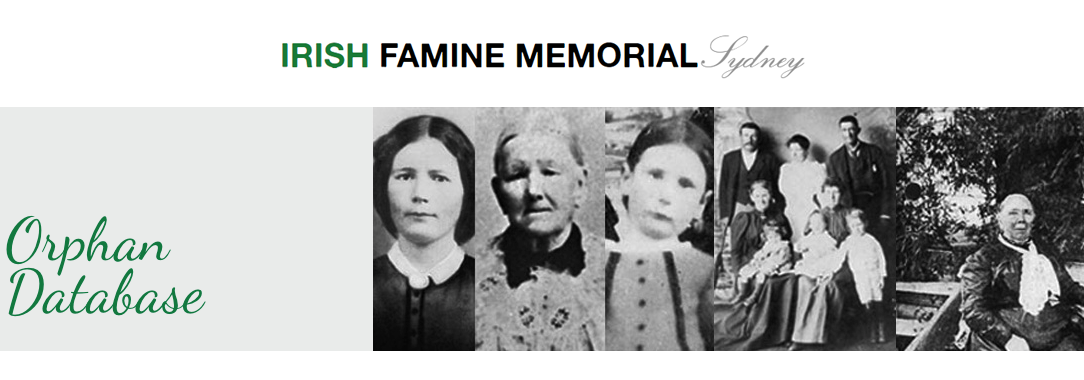Mohill's Earl Grey orphans

The scheme
From 1848-50, the British government – specifically the Colonial Lands & Emigration Commissioners under Earl Grey, Secretary of State for the Colonies – designed a scheme that involved removing over 4,000 Irish girls to Australia. The scheme's objectives were to relieve overcrowding in the Irish workhouses, and to meet the demand for domestic labourers and single young women in the colonies. More than 4,000 orphan girls were sent from Ireland to Australia. Some 45 girls from Carrick-on-Shannon, Mohill and the surrounding area were amongst those sent to Australia under the Earl Grey scheme. The girls, aged 15 to 18, were selected for their good health and moral character. They were given a box of supplies, including petticoats, gowns, shoes, a shawl and bonnet, two pounds of soap and a prayer book.
To read more about
Mohill workhouse during the Famine, click here >>>
Departure and arrival
We don’t know what the young girls were thinking or how they got to Dublin, but it would not have been easy.
Before going aboard their ship in Dublin, an agent for the Emigration Commissioners examined the girls and checked their character testimonials from the workhouse.
Aboard ship, the girls were separated from other emigrants but they were relatively well fed. Compared to the orphans’ two sparse meals a day of milk and gruel/stirabout in the workhouse, their rations on board were significantly better, and included beef, pork, preserved meat, peas, rice, sugar, butter. The food was given in the expectation that a better diet would maintain their health on the long journey, and present them ready for work on arrival. Their well-being was further supported by a the appointment of a surgeon-superintendent, a matron, submatrons, and, often a religious instructor, to each ship.
On arrival in Sydney, the girls had to wait while the Immigration Agent and Medical Officer checked and recorded each immigrant and checked their health status. Following this, they were held at the British Army’s Hyde Park Barracks, a former convict prison, until they were hired for work. Scrutinised by immigration clerks, health officers and clergy, they shared sleeping quarters in the newly-appointed wards upstairs in the barracks. When deemed ready for work, they went to the hiring rooms on the lower floor to be inspected by prospective employers. If deemed suitable, they signed an indenture before leaving with their new employer into an uncertain future. Sisters and friends were separated as they were hired-out to work, and the indentures meant that the girls' liberty was severely curtailed. For example, they had to get permission to marry.
Indentures were agreed with wages on a sliding scale according to age (which explains why some orphans's ages were exaggerated before the voyage. Those aged 14 earned £7 pa; age 17+ up to £10 pa, plus bed and board. Indentured servants ultimately attained their freedom, once they completed their contract or become permanent employment, at the standard wage if both parties agreed.
Prejudice
The prejudices against the Irish and their poverty followed them to their new home. Many Irish girls faced endemic discrimination and ill-treatment from Australians as well as colonial officials. Much of this was based on an ingrained belief that the orphans were second-rate compared to English or Scottish girls, and that the Irish girls were ignorant and unfit for domestic labour. It is true that the Irish orphans had only limited education, often a result of the failures of the workhouse system. A local Poor Law inspector at Mohill workhouse said ‘I cannot say much for their education ... several of them I think had very little, others had a tolerable amount’.
In the early stages of the Earl Grey scheme, a growing labour market in Australia ensured employment for the girls. However, in a few short years, that changed, and along with an increase in complaints, led to the end of the scheme.
Mohill girls
At least twenty-two girls from Mohill landed in Sydney in 1849 and 1850, on Inchinnan (Sydney 13 Feb 1849); Tippoo Saib (Sydney Jul 1850). The Tippoo Saib was the last of the Earl Grey ships: it sailed from Plymouth on 8 April 1850; arrived 29 July 1850, after a voyage of 114 days. Not enough is known about the lives of the girls who were sent to Sydney under the scheme. Many became the brides of merchants, farmers and gold-miners and had large families. A few had tragic lives and died young in the harsh surroundings of pioneer farms.
The Mohill girls are listed below. Their names may not have been spoken out loud for 175 years in Mohill, so please consider reading this list out loud, if only as a message to say we remember you.
Name, Age on Arrival
Bridget Boyle, 13 or 15
Ann Caffery , 17
Bridget Callery , 18
Mary Carroll, 16
Mary Cline, 16
Bridget Donnelly, 16
Mary Flynn, 17
Ellen Fox, 16
Catherine Gannon, 19
Rose Hogan, 15
Ellen Kelly, 16
Mary Kelly, 18
Mary McCrann , 16
Mary McGuiness , 18
Bridget McHugh, 16
Maria McHugh, 15
Ellen McKeon, 19
Honora Mullerne, 16
Margaret Mulvanerty, 15
Catherine Reid, 17
Bridget Reynolds,
Mary Reynolds, 16
Bridget Rourke, 16

